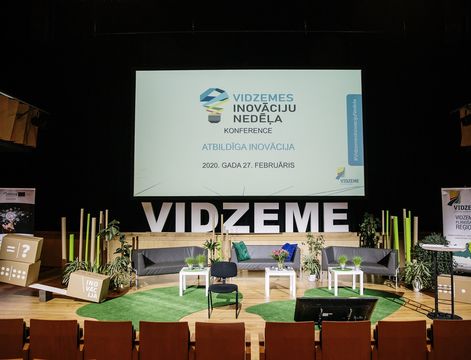
Vidzeme AP implementation progress in 2020
Progress of the implementation of the action plan of Vidzeme Planning Region.
The goal of INNO INFRA SHARE (Sharing Strategies for European Research and Innovation Infrastructures) project is to improve the accessibility and the exploitation of local Research and Innovation infrastructure (RII) assets by SMEs.
RIIs have the potential to serve as enablers of competitiveness and growth for local SMEs and foreign users, especially in the areas of Key Enabling Technologies (KETs). To unleash this potential, project partners will jointly work towards adding a market-driven dimension to the research and technological one, by networking and promoting collaboration opportunities at the regional and international level and by addressing national and regional RII relevant policy instruments.
The partnership covers 8 European regions from Italy, the Netherlands, Belgium, Germany, Latvia, Estonia, Czech Republic and Sweden, all of them with common RIS3 smart specialization priorities.
Partners will undertake a joint learning and collaboration process, involving regional and national stakeholders, that will contribute to the design and implementation of 8 Action plans in their respective territories to improve policy instruments that will positively affect RII and improve their accessibility by SMEs.
€1,364,481.00
Research and innovation
The selected policy instrument is the ERDF-ROP 2014-2020 of Emilia-Romagna, in particular the Axis 1-Research and Innovation, SO 1.5-Strengthening of excellence in R&I, Action 1.5.1-Support to the research infrastructures crucial for the territory. This policy instrument aims to reinforce the regional research and innovation infrastructures performance, improving their capacity to work within the regional innovation ecosystem in favour of territorial competitiveness and in line with the S3 specialization areas. The instrument will support the acquisition of scientific goods and facilities, the strengthening of innovation capability and the economic exploitation of research results, providing support and opportunities mainly to SMEs in the regional specialization areas. The specific measure of the selected policy instrument dedicated to the ‘Support to the research infrastructures crucial for the territory’ (Action 1.5.1) addresses existing research infrastructures that need to be grouped and connected in order to scale and reach a suitable critical mass in terms of variety of application and dimension of dedicated research staff. The instrument needs to be improved to reinforce the professional management of research and innovation contracts, and with the setting up of methods for shared utilization by other research groups but also directly by companies(and SMEs), as well as the definition of tools for knowledge circulation both at local and international level.
The OP South Netherlands 2014-2020 (OPZuid) is the funding program for the Dutch provinces of Zeeland, Limburg and North Brabant with 113,6 mEUR of ERDF funds allocated. With additional public and private funds it is expected investment boost of approx. 321 mEUR to be allocated in 2 investment priorities: 1) Strengthening of Research, Technological Development and Innovation, 2) Support the shift to a resource-efficient, low-carbon economy. The RIS3 “Art of Combination and Cooperation” translates EU2020’s objectives into regional social challenges and drives OPZuid, which provides funding opportunities for: • strengthening innovation by encouraging cross-over between the international top clusters (high tech systems, chemistry, agrifood) and between the international and national top clusters (life sciences&health, bio-based, logistics and maintenance) • promotion of open innovation/methods/processes connected thereto (living labs, pilots, co-creation, social innovation and the use of design..) • promotion of cooperation between (SME) companies and between (SME) businesses, knowledge, research institutes, governments. Getting insight into the existing regional R&D infrastructure is difficult, let alone opening up – sharing – these to (with) external private parties. Similarly, the development and exploitation of living labs and testing grounds has not made enough speed yet. The policy instrument therefore needs improvement and this project can function as a crucial catalyst.
The objective of the policy is to increase the ability of Latvian research institutions to attract external funding, and the number of employees working in research will be increased within the framework of the specific objective, investing in human capital and infrastructure according to the results of external assessment of research and RIS3. Science and innovation capacity of Latvia will be facilitated, with the development of its potential of scientific and technological excellence, restoring human capital and attracting human resources in R&D, thereby contributing to the international competitiveness of research institutions of Latvia, attraction external funding and promoting cooperation with enterprises that create and implement new knowledge-intensive and competitive products. The existing policy instrument is aiming to solve several structural challenges on the national level and to increase R&D and business sector cooperation, however it does not foresee yet increased internationalization of Latvian R&D institutions and regional specialization, and the cooperation aspect with the industry players with a focus on international competiveness and innovation attraction is still weak. One output indicator of the policy instrument is the increased number of entrepreneurs cooperating with research institutions, thus an improvement for making this cooperation more effective is needed.
This policy instrument aims to: create in Tartu the best learning environment of Estonia based on upper secondary, vocational and higher education and also strengthen international cooperation in the field of research and development; develop Tartu to be the best place for starting a business in Estonia, to be wise and develop the international business, which would support the region's economic growth and employment; Tartu is a centre for continuing education and requalification, which involves educational establishments of different levels. The instrument will support the educational and research establishments by creating an integral, international network of educational establishments and make considerable contributions to the development of the innovation system supporting the regional economy. The instrument will support the enterprises in Tartu that are of great vitality and at the high-technological level. This also enables to address the development of smart entrepreneurship in Tartu region and create an attractive environment. The measure will address existing research infrastructures that need to be grouped and connected in order to reach a suitable critical mass in terms of variety of application and dimension of research staff. Moreover, there is a need to improve the professional management of research and innovation contracts, the setting up of methods for shared utilization (also by companies) of research infrastructures and of tools for knowledge circulation
The ERDF program Flanders aims at enforcing the sustainable growth and competitive power of the Flemish economy. Moreover the goal is to support the realisation of the European goals in the frame of the Europe 2020 strategy for an innovative, sustainable and inclusive growth. Infrastructure is of imminent importance to technological research and innovation and aims to validate research results. By making use of the existing research infrastructure companies, especially SME’s, are able to learn and to strengthen their innovative power. The cross border sharing of this infrastructure will thus support the companies making use of them in stimulating technological development and innovation. It will enforce the take-up of technological research results by companies.
The ERDF programme for Skåne-Blekinge 2014-2020 is the core financial tool for development in the Skåne region comprising 61 million euro in total. The two most relevant specific objectives under TO1 concern collaboration for a sustainable innovation infrastructure and innovation capacity in the smart specialisation areas. Leading partners in Skåne has jointly chose three areas of smart specialisation: sustainable cities, health and materials. The last one is chosen due to the coming establishment of two international Large Scale Research Infrastructures, MAX IV and ESS. The innovation capacity around these is highly dependent on international R&I infrastructure, which makes the OP and its connecting S3 strategy important to continuously develop. One of the important issues the OP and its connecting S3 strategy is designed to address is the low level of internationalisation in Skåne, which is clearly shown in the OECD survey on Skåne from 2012. To be able to give the desired effect, the implementation of the programme, and thus the S3 strategy, needs to be improved giving more possibilities to collaborate across the EU, and development opportunities identified for the following programme period. Also the specific objectives under TO3, eg strengthening entrepreneurship and more growth companies, will be important to develop since the S3 points out the potential in developing new and more innovative companies in connection to the specialisation area of materials, ESS and MAX IV
Specific objective 1 dedicated to ‘Improving international quality of research and its results’ includes a number of interventions which shall result in (among others): Greater openness and accessibility of R&D infrastructures (including their internationalisation) for research teams from other research centres, including from foreign countries, on the basis of transparent rules for the use of instruments and equipment. Currently, within this specific objective concerning the topic of the project and the area of research infrastructures in general, one specific call dedicated to the upgrade of the research infrastructures was launched, in order to enhance and support the excellent research activities by using of the upgraded research infrastructure. The policy instrument as such shall also support the openness and broader accessibility by all actors, and improve impact of the infrastructure on the one hand and stimulate the international collaboration and increase the level of collaboration of companies with research infrastructures on the other hand.
StrategieWerkstatt” is a dynamic and moderated platform for the development/qualification of the regional industrial policy. The Saxon State Ministry of Economic Affairs, Labour and Transport is leading that instrument as an open, continuous, interactive communication and strategy building process. In its first phase from 2016, stakeholders and actors from the triple helix analyse and discuss the current state of play of the industry development and of the related policy, future trends and regional foresight scenarios for the industry and challenges which result from them for industry, the research as well as for the related policy. The instrument aims at the development of policy guidelines for a sustainable industrial development and the identification of projects for its successful implementation. Projects and innovative approaches to develop and to access up-to-date research infrastructures are likely to be identified as important tasks to implement the new strategy. Also, it has been recognized that the interregional cooperation in that field will be one of the success factors for the new strategy. But presently, only few international experts and partners are involved in that process. The linkage of the future workshop with policy approaches and the mutual learning with other regions would improve the instrument significantly. It will contribute to the objective of the process to identify international strategic innovation partnerships for the Saxon industry.

Progress of the implementation of the action plan of Vidzeme Planning Region.
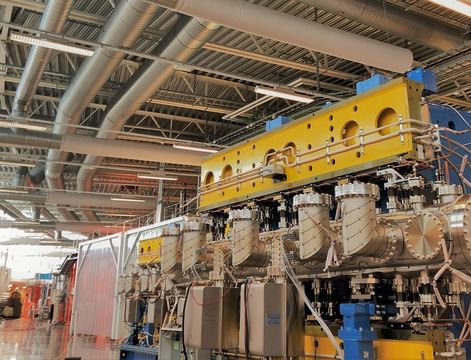
The 2nd session of the project final conference highlighted policies and practices to facilitate and accelerate innovation-focused interregional cooperation.

Progress of the implementation of the action plan of Central European Institute of Technology (CEITEC BUT).
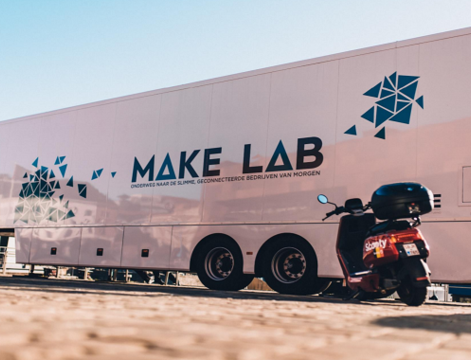
First session of the conference on (RIIs) and interregional cooperation has gathered around 50 participants from RIIs, universities and policy makers.

In October project is organizing an online conference in 2 sessions on accessibility and interregional cooperation in research innovation and exploitation.

All partners forming the INNO INFRA SHARE project consortium have successfully completed Phase 1 of the project.

All partners forming the INNO INFRA SHARE project consortium have successfully completed Phase 1 of the project.

All partners forming the INNO INFRA SHARE project consortium have successfully completed Phase 1 of the project.
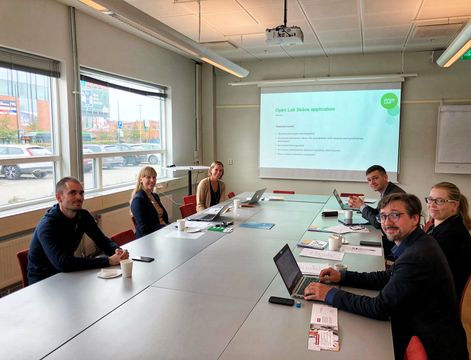
Experts from Latvia visit Open Lab Skåne in Sweden, for an in-depth review of the good practice.
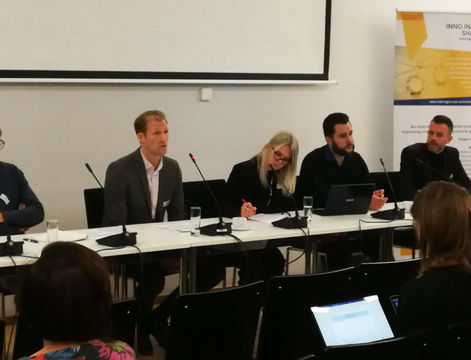
A conference was organized to discuss the future agenda of RIIs.